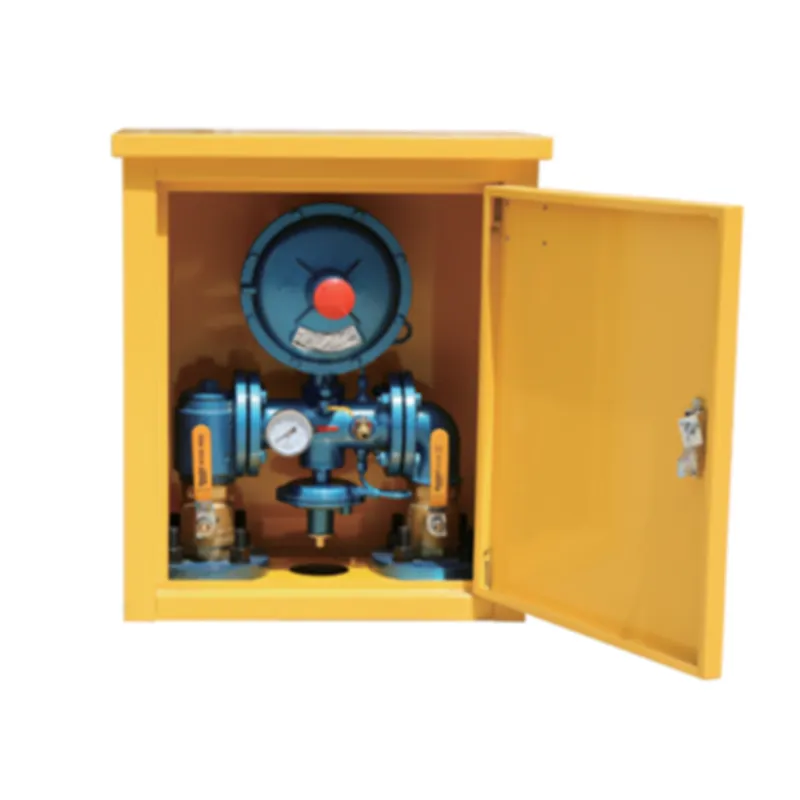
Dec . 11, 2024 11:27
Back to list
pressure regulating device
Pressure Regulating Devices An Essential Component for Safe and Efficient Systems
In a world where fluid dynamics plays a crucial role in various industries, pressure regulating devices (PRDs) have emerged as essential components for maintaining optimal operation within systems that use gases or liquids. From heating systems and water supply networks to industrial manufacturing processes, pressure regulation is vital for ensuring safety, efficiency, and the longevity of equipment.
What is a Pressure Regulating Device?
A pressure regulating device is designed to control the pressure of a fluid in a system, ensuring it remains within a predetermined range. These devices automatically adjust the fluid flow or release excess pressure, thereby preventing situations that could lead to system failures or hazardous conditions. PRDs are found in numerous applications, including residential water systems, gas distribution networks, and industrial settings.
Types of Pressure Regulating Devices
Pressure regulating devices come in various forms, each suited for specific applications. The most common types include
1. Pressure Reducing Valves (PRVs) PRVs are used to lower high-pressure fluid to a safer, usable level. They maintain a constant outlet pressure regardless of fluctuations in inlet pressure, making them essential in residential water systems and gas pipelines.
2. Back Pressure Regulators These devices maintain upstream pressure in a system by allowing fluid to escape as pressure rises. They are often used in processes where maintaining a specific pressure upstream is critical for system integrity.
3. Control Valves Control valves can adjust the flow rate of fluid, impacting the pressure throughout a system. They often work in conjunction with sensors and actuators to achieve desired pressure levels dynamically.
4. Safety Relief Valves These valves are designed to open and release pressure when it exceeds a certain threshold, providing a critical safety mechanism in systems where pressure surges can pose danger.
Importance of Pressure Regulation
The importance of pressure regulation in industrial and residential applications cannot be overstated. Proper pressure regulation serves several key functions
pressure regulating device

- Safety Controlling pressure minimizes the risk of equipment failures that can lead to dangerous leaks, explosions, or system shutdowns.
- Efficiency Maintaining optimal pressure levels allows systems to operate efficiently, reducing energy consumption and operational costs.
- Equipment Longevity By preventing pressure spikes and drops, PRDs help extend the life of pumps, pipes, and other critical equipment, ultimately saving businesses money on maintenance and replacements.
- Quality Control In manufacturing processes, consistent pressure is crucial for ensuring product quality. Pressure variations can lead to defects, waste, and rework.
Challenges and Considerations
While PRDs are invaluable, there are challenges in their implementation and maintenance. Selecting the appropriate type of device for a specific application is crucial; the wrong choice can lead to inefficiency or safety risks. Regular maintenance and inspections are also necessary to ensure that devices operate correctly, as wear and tear can lead to malfunction.
Additionally, integrating new pressure regulation technology within existing systems can pose challenges. Upgrading legacy systems often requires thorough assessments and engineering evaluations to ensure compatibility.
Future Trends in Pressure Regulation
As technology advances, the future of pressure regulating devices looks promising. Innovations in smart technology and IoT (Internet of Things) are expected to transform traditional PRDs. Smart pressure regulators can provide real-time monitoring and data analytics, enabling predictive maintenance and enhanced efficiency.
Moreover, the push for sustainability in various industries is leading to the development of pressure regulation solutions that optimize energy use and minimize waste. These advancements will not only enhance safety but also contribute to greener operational practices.
Conclusion
Pressure regulating devices are essential components in ensuring the safe and efficient operation of fluid systems across multiple industries. Through proper selection, installation, and maintenance, PRDs protect equipment, enhance efficiency, and promote safety. As innovations in technology continue to evolve, the future of pressure regulation promises to bring even greater benefits for both industrial and residential applications. Understanding and implementing proper pressure regulation is not just a matter of compliance; it’s a commitment to safety, durability, and efficiency.
Next:
Latest news
-
Safety Valve Spring-Loaded Design Overpressure ProtectionNewsJul.25,2025
-
Precision Voltage Regulator AC5 Accuracy Grade PerformanceNewsJul.25,2025
-
Natural Gas Pressure Regulating Skid Industrial Pipeline ApplicationsNewsJul.25,2025
-
Natural Gas Filter Stainless Steel Mesh Element DesignNewsJul.25,2025
-
Gas Pressure Regulator Valve Direct-Acting Spring-Loaded DesignNewsJul.25,2025
-
Decompression Equipment Multi-Stage Heat Exchange System DesignNewsJul.25,2025

